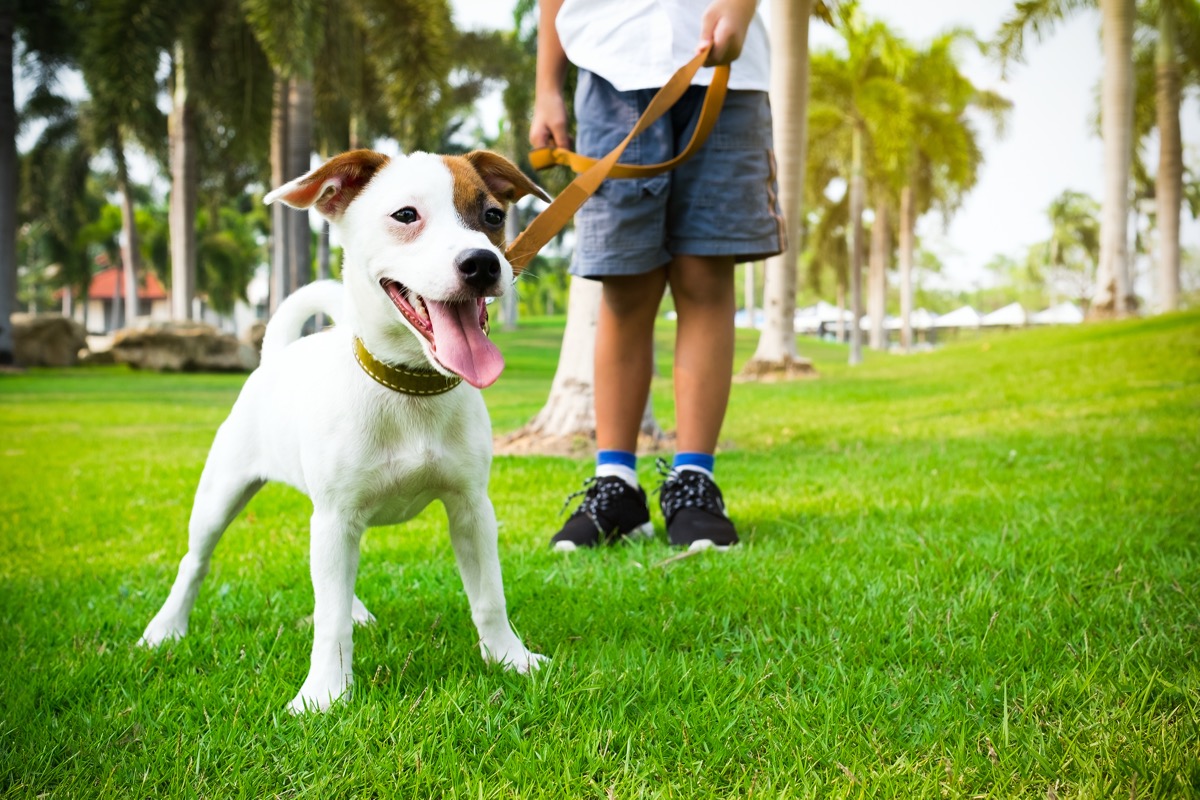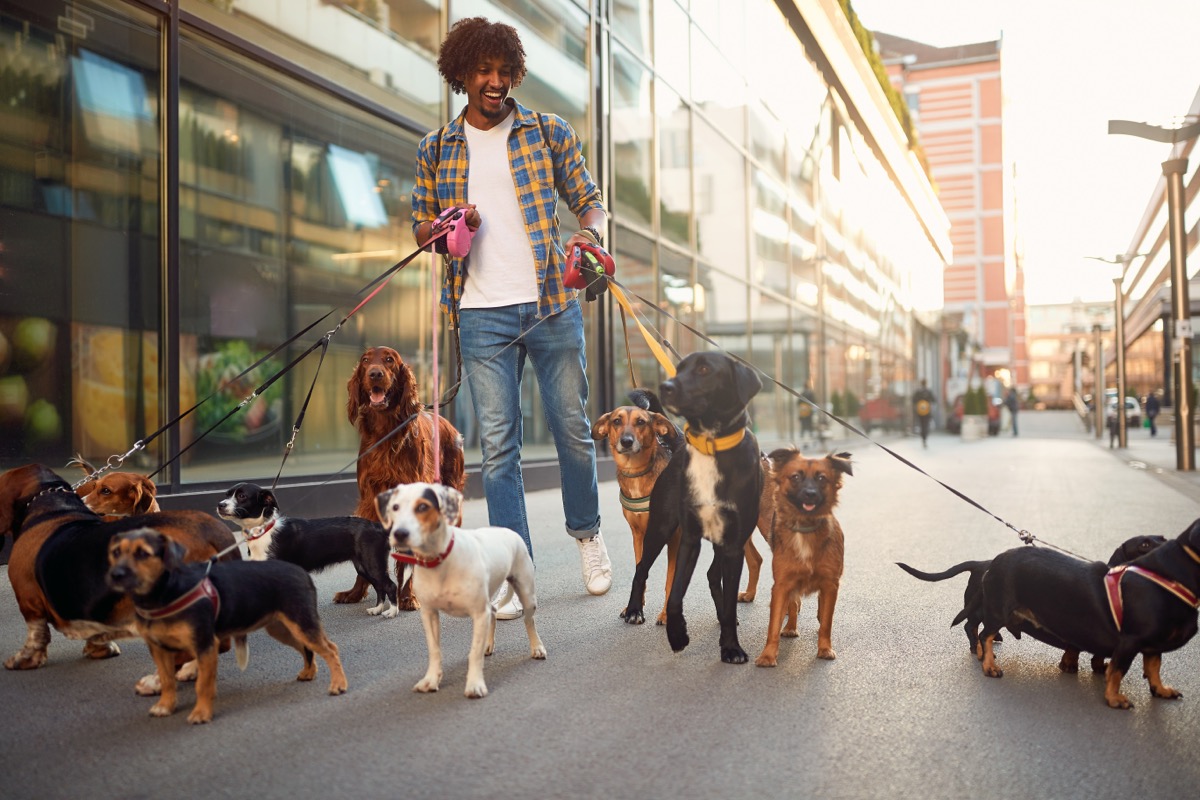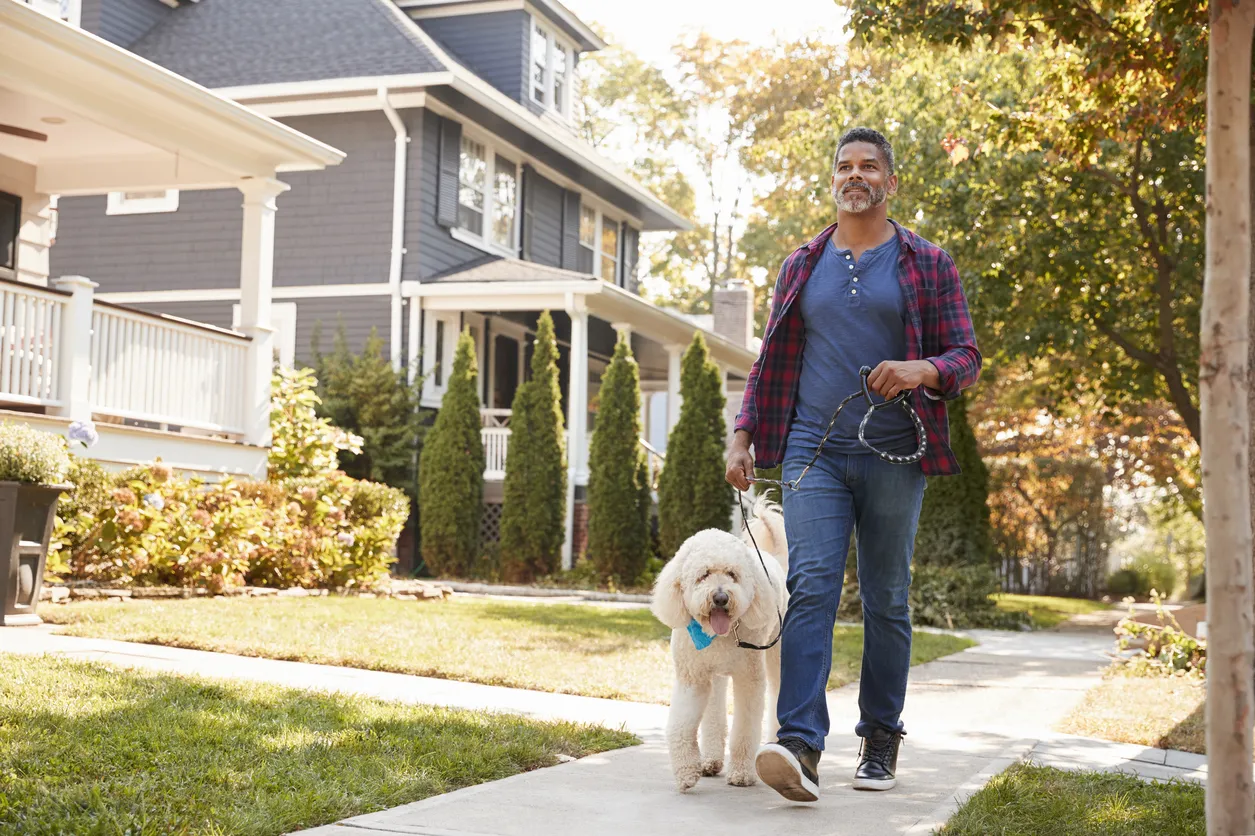Cesar Millan Says You Should Never Walk Behind Your Dog—Here’s Why

If your dog struggles with behavioral issues—barking, overexcitement, or aggression—going for walks can spike your stress. Yet celebrity dog training expert Cesar Millan says there’s a simple solution that can tame your dog’s temperament: having them walk at your side. In a series of recent videos, Millan demonstrates how this one simple change can transform bad behavior when you’re out for a walk. In fact, he says there are three key reasons you should never walk behind your dog—and offers some great tips on how to set your pet up for success.
RELATED: I’m a Dog Trainer and I’d Never Own These 5 Breeds “Unless My Life Depended on It.”
Walking in front of you makes them feel over-stimulated.

When you let your dog walk in front of you rather than at your side, Millan suggests that they’re likely to feel overstimulated. This makes dogs more reactive to their environments, ultimately causing them to bark, lunge, or chase.
In one TikTok post, Millan demonstrates how the simple act of walking your dog next to you rather than in front of you can stop them from responding to their toughest aggression triggers—in the case of one dog, a rolling skateboard nearby. Holding the leash at a shorter distance but without any tension, Millan guides the dog to walk at his side, keeping himself “calm and sure, but not tense.” To the owner’s amazement, the dog ignores the skateboard that had sent him into a frenzy just moments before.
It puts them in the role of protector.

When you walk behind your dog, you put them in the position of being the pack leader and protector. This may inadvertently ramp up your dog’s aggression, especially around other dogs.
“He needs to follow, rather than lead,” Millan says, while demonstrating his corrective approach with a golden retriever. “We keep him in a follower’s state. Now that he’s in a follower’s state, he’s going to give you different behavior.”
Millan walks the retriever in a circle around another dog, holding the leash at a short distance and keeping the retriever on the outer side. “We’re saying, ‘We can walk around you but we’re gonna give you distance, and respect your space,'” the trainer explains.
RELATED: I’m a Veterinarian and These Are 5 Dog Breeds That Will Never Leave Your Side.
It’s unsafe on “pack walks.”

When you walk more than one dog in a “pack walk,” it’s especially important to make sure you never walk behind them, Millan says: “Otherwise it would be a pulling walk or an exploring walk or a tracking walk,” which can quickly become dangerous in a group setting.
“If a dog is in front, then he has the right to lead or to choose or to stop… He has the right to eat whatever is on the floor, so you won’t be able to prevent it. Being in a follower state, it allows the migration, so that way they can ignore the environment. For safety purposes, they have to be in a follower state,” Millan says.
Here’s how to set yourself up for success.

Millan says there are a few simple ways to make the process easier on both you and your pet. First, he always uses a slip leash, which tightens if the dog pulls—though he notes that you should refrain from pulling on the leash yourself.
While your dog is still a puppy, he suggests getting them used to the leash by training them to put their head through the leash collar themselves. You can do this by holding a treat on the other side, practicing putting it on and taking it off.
Next, he says you should demonstrate your sense of calm so the dog can match your energy. “Once you have silence and calmness, the mind is open. If you were to [say], ‘You want to go for a walk!?’ then the mind is excited, and the mind is going to listen to excited sources—toys, dogs, squirrels, food,” he says, adding, “Everything starts from the beginning.”
Finally, he says you should always set your intention before leaving for a walk so your dog understands what to expect: to follow, play, or explore. “And then you do it for a long period of time, until your dog gets in the zone,” Millan says.
For more dog training tips sent directly to your inbox, sign up for our daily newsletter.